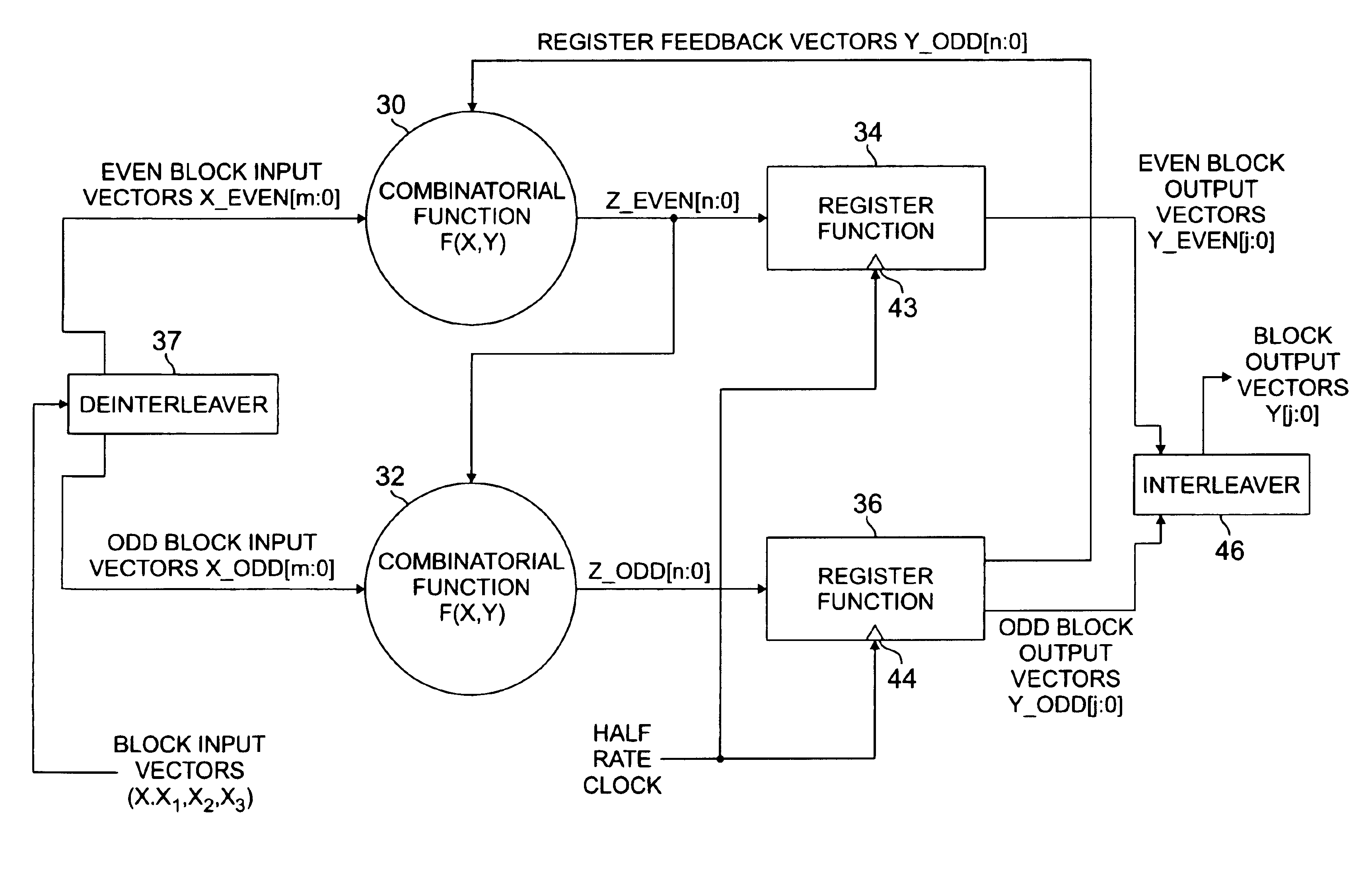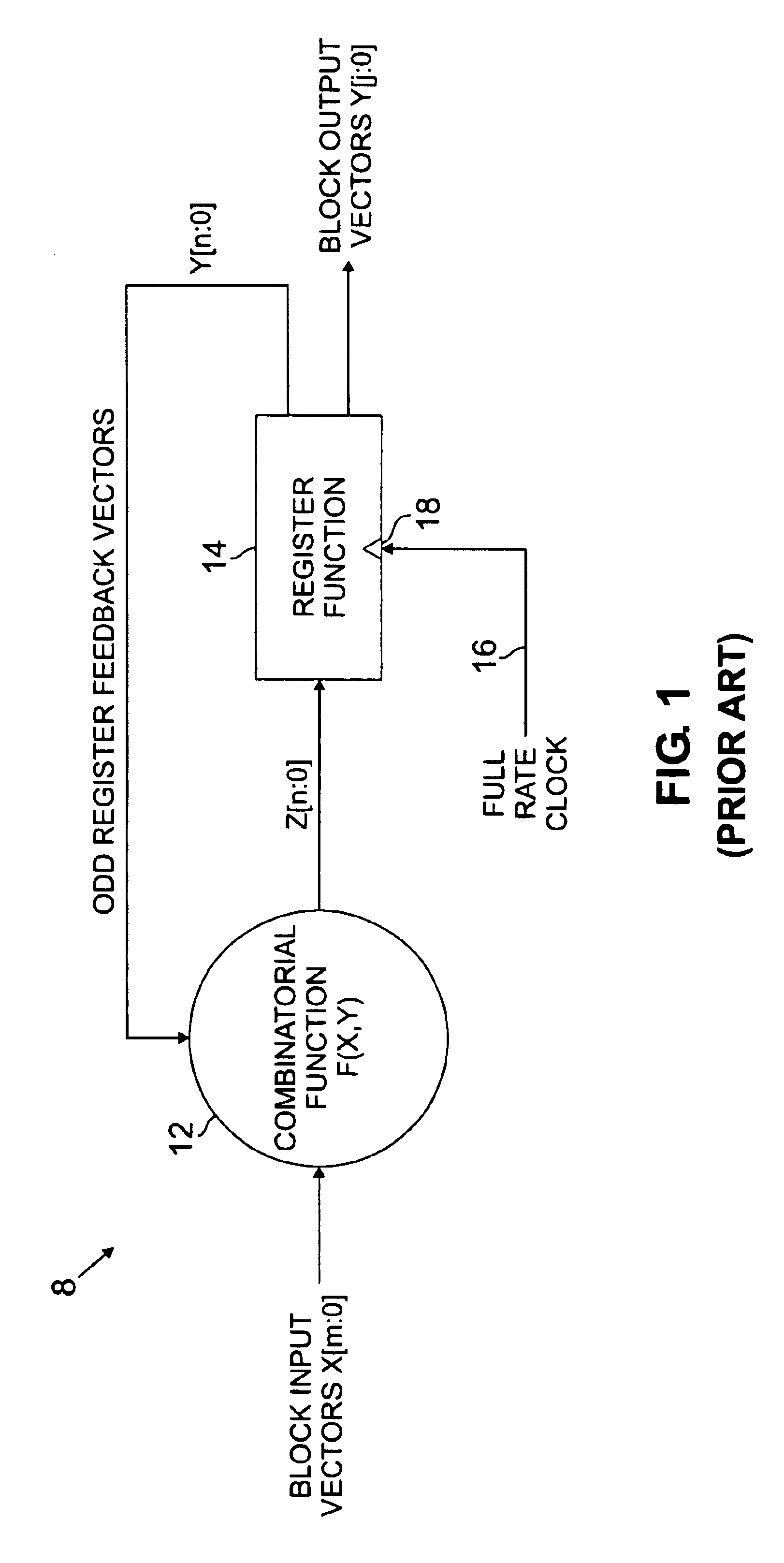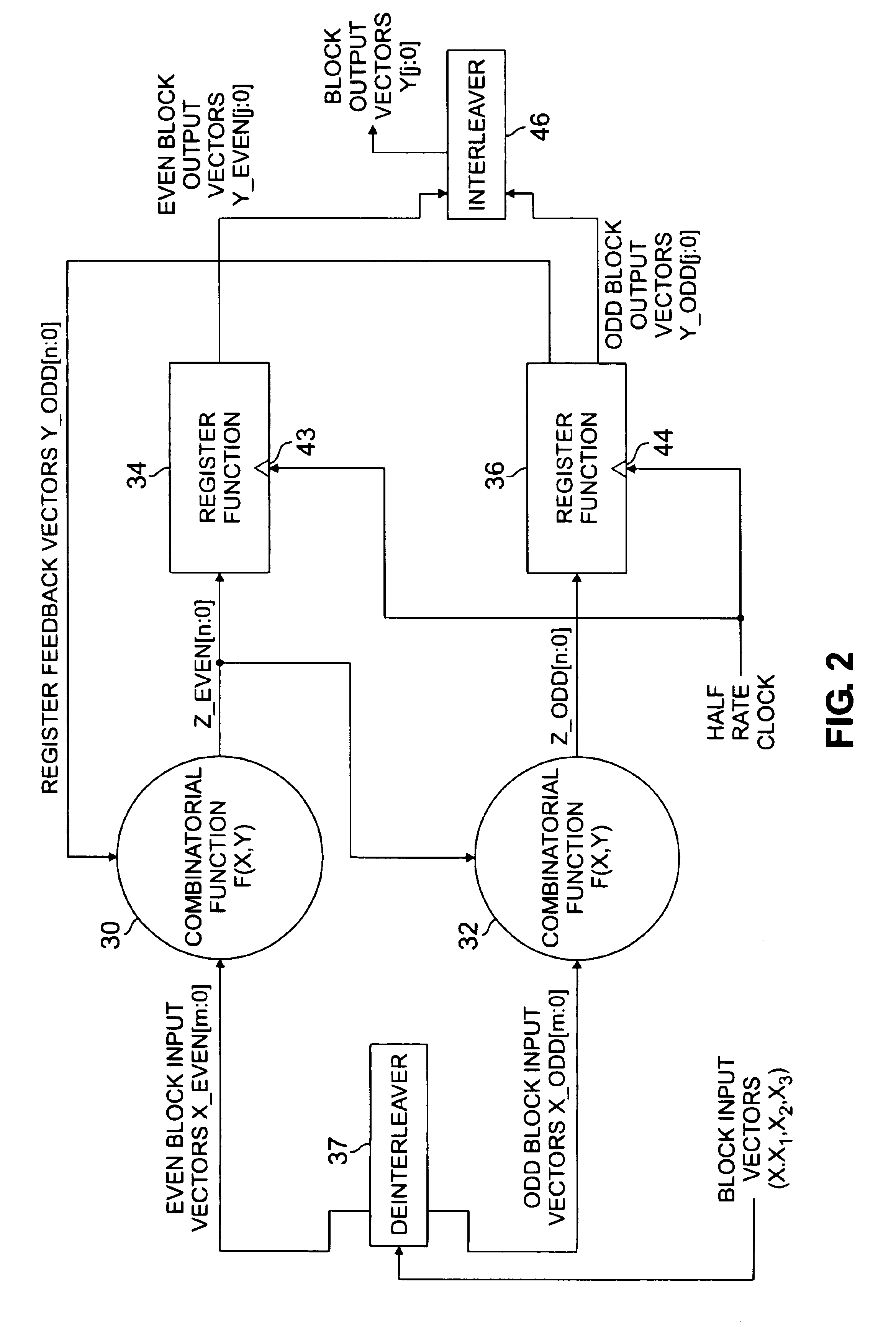Half-rate clock logic block and method for forming same
a logic block and half-rate clock technology, applied in the field of combinatorial and sequential logic circuits, can solve the problems of insufficient time for a circuit element, output signal may be erroneous, and difficulty in converting to a half-rate clock
- Summary
- Abstract
- Description
- Claims
- Application Information
AI Technical Summary
Benefits of technology
Problems solved by technology
Method used
Image
Examples
Embodiment Construction
Before describing in detail the particular half-rate clock digital circuitry and the method for converting a full-rate clock digital circuit to a half-rate clock circuit in accordance with the present invention, it should be observed that the present invention resides primarily in a novel and non-obvious combination of elements and method steps. Accordingly, these elements and steps have been represented by conventional elements in the drawings, showing only those specific details that are pertinent to the present invention so as not to obscure the description with structural details that will be readily apparent to those skilled in the art having the benefit of the description herein.
FIG. 1 illustrates a prior art full-rate clock logic block 8 comprising a combinatorial function 12 and a register function 14 (also referred to as a sequential function). A plurality of m+1 logic signals (designated 0, 1, 2 . . . m) comprise a signal vector X (designated X[m:0], input to the combinato...
PUM
 Login to View More
Login to View More Abstract
Description
Claims
Application Information
 Login to View More
Login to View More - R&D
- Intellectual Property
- Life Sciences
- Materials
- Tech Scout
- Unparalleled Data Quality
- Higher Quality Content
- 60% Fewer Hallucinations
Browse by: Latest US Patents, China's latest patents, Technical Efficacy Thesaurus, Application Domain, Technology Topic, Popular Technical Reports.
© 2025 PatSnap. All rights reserved.Legal|Privacy policy|Modern Slavery Act Transparency Statement|Sitemap|About US| Contact US: help@patsnap.com



